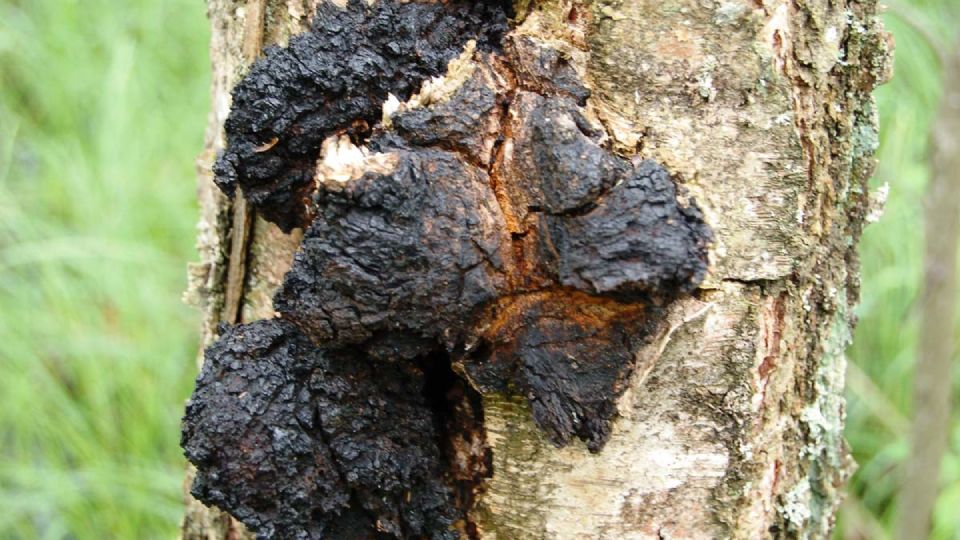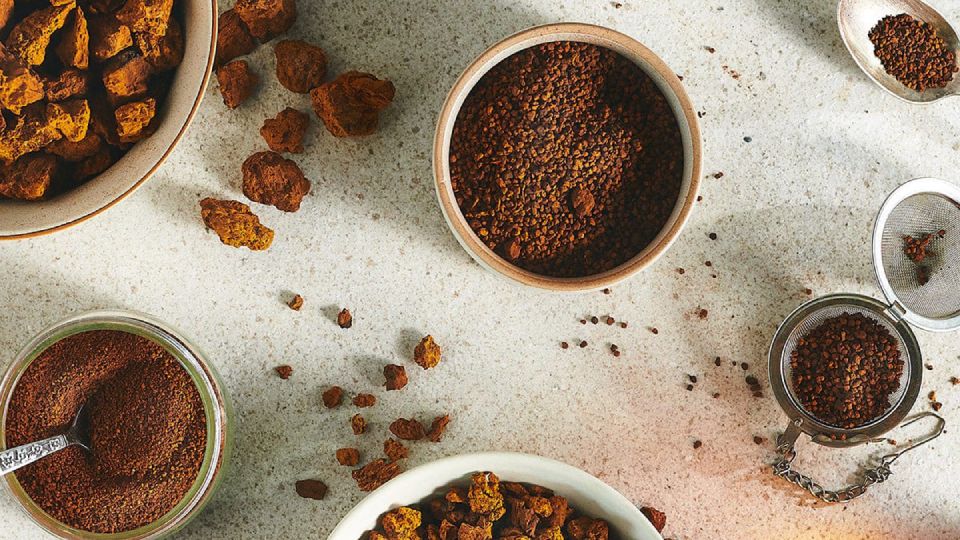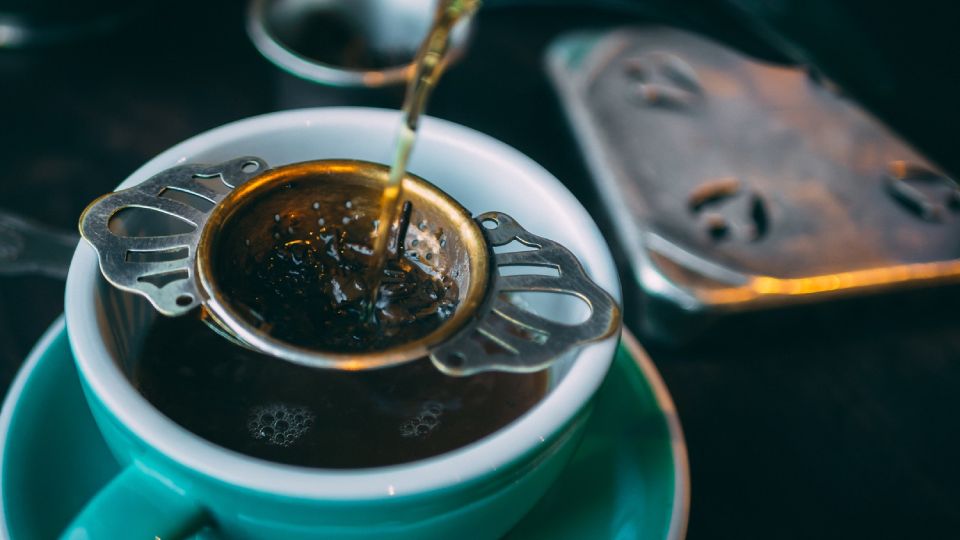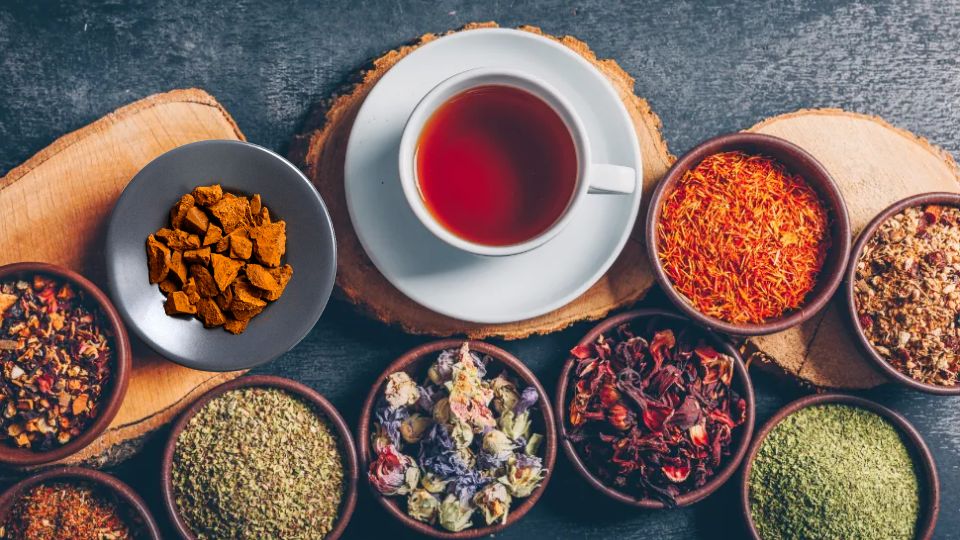What Does Chaga Tea Taste Like? Good or Bad?
Do you ever wonder what Chaga mushroom tea tastes like? You’re not alone! In the West, most of us aren’t familiar with the ritual of mushroom teas, and chaga mushroom is primarily valued for its pharmaceutical properties rather than as food. But don’t be afraid to give it a try! Chaga tea is brewed from mushrooms that grow on birch trees in cold climates, and it offers a unique taste profile.
Chaga tea has an earthy flavor, often described as a delightful blend of mild coffee, vanilla, and sometimes a hint of mushroom or nutty taste. The texture is rich and full-bodied, and you can enhance its flavor with brewing techniques and additives like honey or maple syrup. Just be careful not to steep it for too long, as that can make it bitter. With proper brewing, you’ll get a smooth, comforting beverage with a mild sweetness.
In this article, we’ll take a closer look at the fascinating world of Chaga tea. We’ll explore its origins, health benefits, and taste, providing you with all the information you need before taking that first sip. We’ll also share some useful tips on how to properly brew Chaga tea to bring out its best flavor and share some popular recipes you might want to try. So get ready to embark on this delightful tea journey.
In this article:
What is Chaga Tea?
Let’s start by introducing chaga. Chaga, a type of fungus, mainly grows on the bark of birch trees in cold climates like Northern Europe, Siberia, Russia, Korea, Northern Canada, and Alaska. Despite its appearance resembling a dark clump of dirt, you’ll find bright orange tissue beneath its exterior. If you’re in North America, you’ll likely come across it in the Northeast region. However, Chaga tea is made of Chaga mushroom chunks or powder. People in Eastern Europe have cherished chaga tea for its many health benefits over the centuries. The Chaga mushroom goes by the Latin name Inonotus obliquus, but other common names include:
- Birch conk
- Cinder conk
- Clinker polypore
Identification and Harvesting

Unlike the familiar cap-and-stem shape of most mushrooms, Chaga presents itself as a large, irregular growth. Its exterior looks like a hard, deeply cracked piece of charcoal, while inside, it’s soft and cork-like, displaying a beautiful golden-brown color.
Harvesting Chaga requires careful attention and respect for the birch tree it grows on. You should only harvest mature Chaga, which is usually at least five years old, and leave some behind to ensure future growth and the sustainability of this incredible resource. By doing so, you can help preserve this precious gift from nature.
Read More: The Two Sides of Chaga
Chaga Mushroom Tea Benefits
Before we dive into the tantalizing taste of chaga tea, it is essential to acknowledge the potential health benefits associated with this mushroom brew. Research suggests that Chaga is rich in antioxidants and may help reduce oxidative stress and free radicals in the body[1]. Additionally, it is believed to support a healthy immune system, lower blood sugar levels, and possess anti-inflammatory properties[2]. Some studies even suggest that Chaga’s compounds, like beta-glucans and betulinic acid, may have anti-cancer properties[3].
Moreover, Chaga Mushroom acts as an adaptogen, meaning it helps restore balance in the body and brings about beneficial effects in various areas. Adaptogens provide vital support to both our body and mind, empowering us to cope with stress, maintain good health during the flu season, and emerge from the depths of depression and adrenal burnout[4].
The benefits of adaptogens include:
- Promotes a healthy gastrointestinal tract.
- Supports and calms the nervous system.
- Strengthens and boosts the immune system.
- Regulate the endocrine system.
- Effects on the cardiovascular system.
However, it’s crucial to consult a healthcare professional before using chaga as a substitute for any medical treatment.
What Does Chaga Tea Taste Like?
Now let’s talk about “What does Chaga tea taste like”, it’s essential to note that its flavor is distinct and different from what you might expect from medicinal mushrooms. Chaga mushroom tea doesn’t have the typical mushroom taste. Instead, it offers a strong, unique flavor best described as earthy with a slight bitterness. It also includes a natural form of vanillin, which is the same compound found in vanilla beans. You can certainly drink chaga mushroom tea on its own, but the flavor may not be appealing to most people.
Chaga Tea Flavor Profile
This earthy brew is renowned for its unique flavor, captivating the palates of tea enthusiasts around the world. When sipping chaga tea, expect an earthiness that is hard to find in other beverages. The taste is often described as woody, nutty, and reminiscent of mushrooms, creating a truly distinct and enriching experience.
You may even notice subtle notes of chocolate or a slightly fruity undertone, which the mushroom naturally absorbs from its living tree host, adding to its unique flavor profile. Some people compare the taste of Chaga tea to that of a woody broth, making it even more interesting and complex.
What’s intriguing is that the taste of Chaga tea can range from slightly sweet to bitter, depending on how long you brew it. So, when preparing your Chaga tea, factors such as the way the Chaga was harvested, the method of preparation, and your personal taste preferences can significantly influence the final taste.
Texture and Mouthfeel
When brewed, the aroma of chaga tea is captivating, carrying earthy notes reminiscent of mushrooms and a subtle hint of woodiness. The infusion is generally smooth and velvety, gliding over your taste buds with ease. Some may notice a slight grittiness, which adds to the charm of this exceptional tea. It leaves a pleasant, coating sensation in the mouth, leaving you yearning for another sip. Overall, Chaga tea offers a delightful texture and mouthfeel.
Comparison of Chaga Tea Taste to Other Teas
When it comes to the taste of chaga mushroom tea, you’ll find a unique and complex flavor that sets it apart from other teas. Let’s compare the Chaga tea taste to some popular teas:
| Tea Type | Description | Taste Profile |
| Chaga Tea | Unique and complex flavor. | Rich, earthy, slightly bitter with hints of sweetness and vanilla. |
| Black Tea | Robust and intense taste. | Rich, earthy, slightly bitter, akin to a mix of coffee and black tea. |
| Green Tea | Fresh and grassy flavor. | Earthy and woody taste, distinct from chaga tea. |
| Herbal Tea | Various floral or fruity flavors. | Earthy essence with hints of sweetness and vanilla stands out among herbal teas. |
| Dark Tea | Earthy and slightly fermented taste. | Shares some similarities with chaga tea’s earthy flavor. |
Please note that taste can be subjective and may vary depending on individual preferences and brewing methods. The table provides a general overview of the taste profiles for each type of tea.
How to Make Chaga Tea?
To fully appreciate the unique taste and potential health benefits of Chaga tea, understanding how to brew it is essential. Whether you’re using Chaga mushroom chunks or Chaga mushroom powder, these simple steps will walk you through the process and ensure you get the most out of your brew. Additionally, we’ll share some helpful tips on how you can adjust the Chaga taste to suit your preferences. So let’s get started and brew your perfect cup of Chaga tea
Choosing Your Chaga: Chunks vs Powder

The first step to brew your perfect cup of Chaga tea is deciding which form of Chaga to use. You have two options: whole Chaga mushroom chunks or Chaga mushroom powder. The choice you make can slightly influence the taste of your Chaga tea.
If you opt for Chaga mushroom chunks, you’ll get a milder taste, similar to a lightly flavored broth. This option might take a bit longer to brew, making it suitable for those who prefer a subtler earthy taste or are new to Chaga tea.
On the other hand, Chaga mushroom powder offers a more robust flavor, as the finely ground particles infuse the water thoroughly. It requires less brewing time. It’s perfect for those who enjoy a strong and earthy taste. The powder is also easy to add to your other beverages such as coffee, smoothies, or even your favorite desserts for an extra dose of Chaga goodness.
Brewing Methods and Serving Suggestions: Affecting How Chaga Tea Tastes
If you want to enhance the taste of chaga tea, there are numerous options at your disposal. Adding a drizzle of honey or a splash of lemon can elevate the flavors, offering a delightful twist to the earthy profile. Some prefer to sweeten their Chaga tea with maple syrup for a more indulgent experience. Additionally, exploring traditional or popular chaga tea recipe from different cultures can provide you with new insights into the art of enjoying chaga tea.
Making chaga tea is a straightforward and rewarding process. Here’s a step-by-step guide on how to make your own chaga tea:
If Using Chaga Chunks
- Select 4 to 5 individual chaga chunks, and break them down into smaller pieces.
- Add them to a pot filled with 4 cups (1 liter) of water.
- Slowly bring the pot to a simmer and let the Chaga steep for at least 30 minutes, or you can steep it for up to 3 hours for a stronger flavor. Remember to keep the lid slightly askew to prevent the tea from reaching a boil.
- Once you’re satisfied with the brewing time, remove the mushroom chunks from the pot. You can reuse the chunks until the tea no longer turns a dark brown color. Just store the used chunks in the freezer in a small baggy for future use.
- Now, pour the tea into a mug and enjoy. If you prefer a sweeter taste, you can add honey or other sweeteners to suit your preference.
Remember, the longer you brew, the stronger the Chaga tea will taste. But be cautious, as an extended brewing time can lead to an extremely bitter taste. Adjust the brewing duration according to your taste preference.
If Using Chaga Powder
- Boil a cup of water in a pot.
- Place one teaspoon of chaga powder in a tea bag, tea ball, or a Bodum-style teapot. Alternatively, you can add the Chaga powder directly to the water.
- Let it simmer for 10-15 minutes, allowing the Chaga to infuse its flavors into the water.
- Strain the tea into your favorite mug.
- You can add honey or maple syrup for sweetness if desired.
- Enjoy the earthy goodness of Chaga tea.
Other Uses of Chaga
Here are other ways of using Chaga:
- Supplements: One way to access all the medicinal benefits of Chaga is by opting for supplements. They come in various forms, such as capsules, tablets, and gummies, making it easy to include them in your daily routine.
- Tinctures: Boil Chaga chunks in water, and once the mixture has cooled, add an equal amount of vodka or rum to the water, close the container with a lid, and let it sit in a cool place for approximately a week, allowing the flavors to meld and the beneficial compounds to infuse into the alcohol. Once the week is up, strain and discard the Chaga chunks, leaving you with the potent Chaga tincture ready for use.
- Skincare: Chaga has been studied for its potential use in skin disorders, particularly the outer black layer on the canker, which is rich in melanin. This compound can aid in protecting the skin from UV radiation and environmental stressors.
Remember that Chaga supplements are more potent than culinary herbs and may interact with certain medications, influencing their effectiveness. It's advisable to consult with your healthcare provider before incorporating chaga supplements into your health regimen.
Chaga Tea Side Effects
Chaga tea is generally safe for consumption by most individuals. However, as with any supplement or herbal remedy, there may be some side effects or interactions with certain medications. Pregnant or nursing women, individuals with allergies to mushrooms, or those taking medications for blood pressure or heart disease should exercise caution and consult a healthcare professional before incorporating chaga tea into their routine.
Does Chaga Tea Have Caffeine?

Many people often wonder if Chaga contains caffeine and how it manages to provide a coffee-like effect without actually having any caffeine. The truth is, Chaga does not have caffeine naturally. Instead, its unique properties, such as antioxidants and phytochemicals, work together to promote a sense of alertness and focus, similar to what you might experience with coffee, but without the caffeine.
This sets Chaga apart from black tea or green tea, which can sometimes lead to jitters or increased heart rate due to its caffeine content. Chaga tea, on the other hand, offers a smooth and soothing experience, ensuring it won’t affect your blood pressure.
For those who are sensitive to caffeine or looking to cut down on their intake, Chaga tea proves to be an excellent alternative to coffee and other caffeinated beverages. Its natural energy-boosting properties provide a gentle lift without relying on any negative stimulants, guaranteeing you won’t experience jitters or any caffeine-related side effects.
While chaga tea serves as a coffee substitute, it’s important to keep in mind that its rich, earthy flavor differs from coffee, making it less suitable for those seeking a coffee-like taste.
Our Experiences and Preferences
Over the years, we’ve thoroughly explored various chaga tea brews and experimented with different brewing methods. Our experiences with chaga tea have been nothing short of delightful. Not only does it satisfy our taste buds, but it also provides a comforting and grounding experience that is truly exceptional and memorable, thanks to its earthy flavor and unique characteristics.
We have been enjoying Chaga Tea for over 10 years, even before it became popular. However, we must admit that the abundance of fancy information about chaga these days seems a bit overwhelming. The market now offers chaga in various forms like capsules, tea bags, gummies, and even hot chocolate.
Despite the numerous new options available, our preference remains firmly rooted in the old-fashioned way of using chaga mushroom chunks. There’s something inherently natural about it, and we highly value the pureness of Chaga without any additives. It’s reassuring to know that we’re getting nothing but the pure and unadulterated goodness of chaga.
How to Choose the Right Chaga Supplements For You
When it comes to choosing the right chaga supplements, here are some tips to help you make an informed decision:
- Look for purity: Ensure that the supplements are sourced from reliable and reputable suppliers. Look for products that are free from fillers, additives, or artificial ingredients.
- Check the extraction method: Some supplements might use harsh extraction methods that can diminish the potency of the mushroom. Opt for supplements that use gentle and effective extraction techniques to retain the beneficial compounds.
- Read reviews and testimonials: Take the time to read reviews and testimonials from other users. This can provide insights into the quality and effectiveness of the supplements.
- Certifications and third-party testing: Look for products that have undergone third-party testing to verify their quality and potency. Certifications from reputable organizations can also indicate the supplement’s authenticity.
- Consult with a healthcare professional: Before starting any new supplement, it’s always wise to consult with a healthcare professional, especially if you have any existing health conditions or are taking medications.
Ultimately, trust your instincts and choose the option that feels right for you. Whether you decide to brew chaga in its original form or opt for chaga supplements, embrace the simplicity and authenticity that chaga offers. Cheers to your well-being and enjoying the goodness of chaga in whichever way suits you
FAQs
Can You Eat Chaga Raw?
Yes, you can eat Chaga raw, but it’s not recommended as it’s hard to digest and doesn’t taste good. However, raw Chaga retains the health benefits of mushrooms. Keep in mind that consuming raw Chaga in its natural form is not safe. Be cautious, remove all dust and dirt, chop it into smaller chunks, and dry it properly.
Does Chaga Tea Taste Bad?
Chaga tea doesn’t taste bad. It has a mild, earthy flavor with hints of vanilla and sometimes subtle notes of chocolate or fruitiness. Some even compare it to a mix of coffee and black tea but with less bitterness. The taste of Chaga tea can vary slightly depending on how it’s brewed and the form of Chaga used, such as Chaga mushroom powder or whole Chaga mushrooms.
How Do You Make Chaga Tea Taste Better?
To improve the taste of Chaga tea, try adding natural sweeteners like honey or maple syrup. You can also experiment with spices like cinnamon or ginger for extra flavor. Adjust the brewing time or mix Chaga with other herbal teas to find a taste that suits your preference.
How Does Chaga Tea Make You Feel?
Chaga tea can make you feel calm, relaxed, and energized. It contains various beneficial compounds that may support overall well-being. Some people report a sense of improved focus and mental clarity after drinking Chaga tea. However, individual experiences may vary.
Does Chaga Tea Taste Like Coffee?
No, Chaga tea does not taste like coffee. It has a unique earthy and mild flavor with no bitterness. While some people enjoy it as a coffee substitute, the taste is distinct from coffee. Experiment with sweeteners or additives if you want to create a coffee-like experience.
Final Thought: Does Chaga Tea Taste Good or Bad?
Throughout our journey, we have quite enjoyed the flavor of Chaga tea. We find that its unique brew boasts an earthy taste with delightful hints of vanilla, mild bitterness, and subtle umami, resembling a harmonious blend of mild coffee, dark tea, or even a warm glass of water.
Yet, Chaga tea isn’t just about its captivating taste; it’s a powerhouse of potential health benefits. From boosting the immune system and enhancing energy levels to supporting digestion and promoting skin health, this tea is a true wellness elixir. Plus, you have the freedom to customize its taste to suit your liking by adjusting brewing time, Chaga quantity, or adding delightful extras like honey, maple syrup, or a splash of lemon.
So, if you haven’t tried it already, we warmly encourage you to brew a pot, take that first sip, and immerse yourself in the world of its distinctive flavor. Who knows? It might just become your new favorite brew, bringing joy and nourishment to your daily routine. Please share your experience with us regarding whether you like or dislike the taste of Chaga tea.
References
1. Ultraviolet radiation promotes the production of hispidin polyphenols by medicinal mushroom Inonotus obliquus. Retrieved from https://www.researchgate.net/publication/364401858_Ultraviolet_radiation_promotes_the_production_of_hispidin_polyphenols_by_medicinal_mushroom_Inonotus_obliquus
2. Investigation of Anti-Inflammatory and Antioxidants Properties of Phenolic Compounds from Inonotus obliquus Using Different Extraction Methods. Retrieved from https://www.researchgate.net/publication/344216414_Investigation_of_Anti-Inflammatory_and_Antioxidants_Properties_of_Phenolic_Compounds_from_Inonotus_obliquus_Using_Different_Extraction_Methods
3. Inonotus obliquus Polysaccharide Ameliorates Azoxymethane/Dextran Sulfate Sodium-Induced Colitis-Associated Cancer in Mice via Activation of the NLRP3 Inflammasome. Retrieved from ncbi.nlm.nih.gov/pmc/articles/PMC7884887/
4. Inonotus obliquus Protects against Oxidative Stress-Induced Apoptosis and Premature Senescence. Retrieved from https://www.researchgate.net/publication/50228722_Inonotus_obliquus_Protects_against_Oxidative_Stress-Induced_Apoptosis_and_Premature_Senescence

